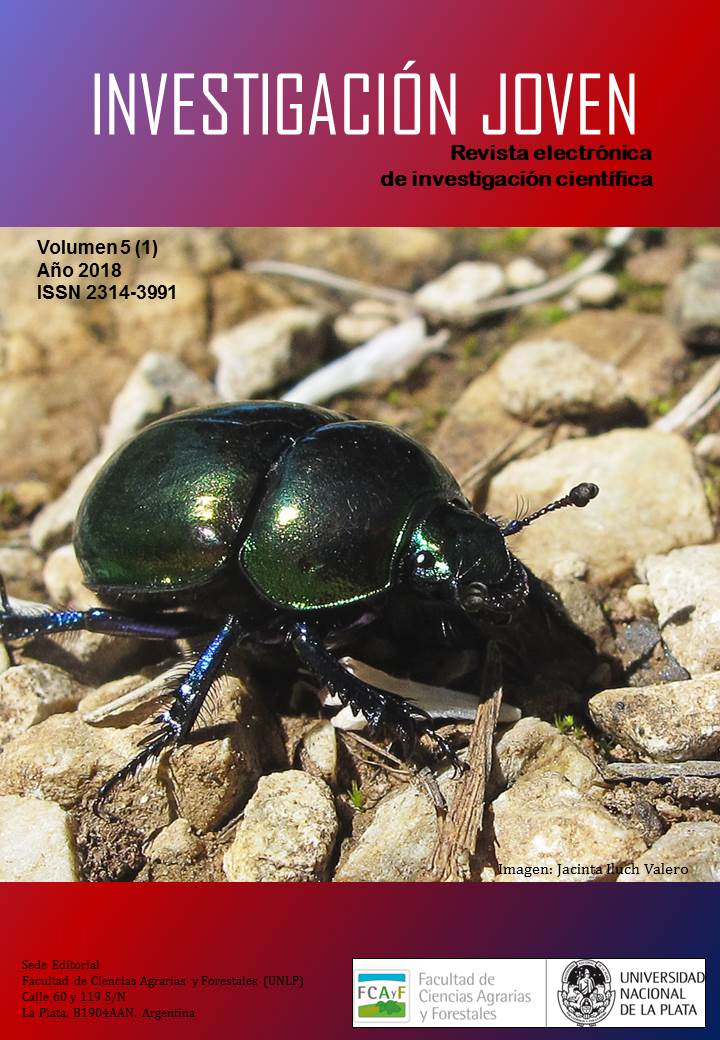Quitina: Compuesto natural y práctico
Palabras clave:
Quitina, Quitosano, Antioxidante, AntimicrobianoResumen
La quitina es un polisacárido de N-acetil glucosaminas que, cuando se somete a un proceso de desacetilación, pasa a denominarse como quitosano. Ambos compuestos presentan variadísimas aplicaciones en numerosos campos e industrias, gracias a características como su actividad antimicrobiana, su biodegradabilidad, su biocompatibilidad, su capacidad antioxidante, filmogénica, o emulsionante. Entre las áreas donde estos biomateriales pueden aplicarse y aportar grandes ventajas destacan la alimentación, la agricultura, la biomedicina, el tratamiento de aguas, la cosmética o la nanotecnología.
Descargas
Citas
[2] E. Agulló, Rodríguez M.S., V. Ramos, L. Albertengo, “Present and future role of chitin and chitosan in food”, Macromolecular Bioscience, 3, 2003, 521-530.
[3] K.H. Prashanth & R.N. Tharanathan. “Chitin/chitosan: modifications and their unlimited application potential—an overview”. Trends in food science & technology, 18, 2007, 117-131.
[4] Z. Mármol, G. Páez, M. Rincón, K. Araujo, C. Aiello, C. Chandler, E. Gutiérrez, “Quitina y Quitosano polímeros amigables. Una revisión de sus aplicaciones/Chitin and Chitosan friendly polymer. A review of their applications”, Revista Tecnocientífica URU, 1, 2013, 53-58
[5] I. Younes & M. Rinaudo, “Chitin and chitosan preparation from marine sources. Structure, properties and applications”, Marine drugs, 13, 2015, 1133-1174.
[6] M.N.R. Kumar, “A review of chitin and chitosan applications”. Reactive and functional polymers, 46, 2000, 1-27.
[7] M. Rinaudo, “Chitin and chitosan: properties and applications”, Progress in polymer science, 31, 2006, 603-632.
[8] A. Alishahi & M. Aïder, “Applications of chitosan in the seafood industry and aquaculture: a review”. Food and Bioprocess Technology, 5, 2012, 817-830.
[9] J. Dutta, S. Tripathi, P.K. “Dutta, Progress in antimicrobial activities of chitin, chitosan and its oligosaccharides: a systematic study needs for food applications”, Food Science and Technology International, 18, 2012, 3-34.
[10] G.M. Saavedra, N.E. Figueroa, L.A. Poblete, S. Cherian, C.R. Figueroa, “Effects of preharvest applications of methyl jasmonate and chitosan on postharvest decay, quality and chemical attributes of Fragaria chiloensis fruit” Food chemistry, 190, 2016, 448-453.
[11] M. Larsson, W.C. Huang, M.H. Hsiao, Y.J. Wang, M. Nydén, S.H. Chiou, D.M. Liu, “Biomedical applications and colloidal properties of amphiphilically modified chitosan hybrids”, Progress in Polymer Science, 38, 2013, 1307-1328.
[12] C. Lárez-Velásquez, “Quitina y quitosano: materiales del pasado para el presente y el futuro”, Avances en química, 1, 2006, 15-21.
[13] F. Ding, H. Deng, Y. Du, X. Shi, Q. Wang, “Emerging chitin and chitosan nanofibrous materials for biomedical applications”, Nanoscale, 6, 2014, 9477-9493.
[14] R.C.F. Cheung, T.B. Ng, J.H. Wong, W.Y. Chan, “Chitosan: an update on potential biomedical and pharmaceutical applications”, Marine drugs, 13, 2015, 5156-5186.
[15] V. Patrulea, V. Ostafe, G. Borchard, O. Jordan, “Chitosan as a starting material for wound healing applications”, European Journal of Pharmaceutics and Biopharmaceutics, 97, 2015, 417-426.
[16] W.C. Lin, C.C. Lien, H.J. Yeh, C.M. Yu, S.H. Hsu, “Bacterial cellulose and bacterial cellulose–chitosan membranes for wound dressing applications”, Carbohydrate polymers, 94, 2013, 603-611.
[17] M. Bittelli, M. Flury, G.S. Campbell, E.J. Nichols, “Reduction of transpiration through foliar application of chitosan”, Agricultural and Forest Meteorology, 107, 2001, 167-175.
[18] M.A. Ramírez, A.T. Rodríguez, L. Alfonso, C. Peniche. “Chitin and its derivatives as biopolymers with potential agricultural applications” Biotecnología Aplicada, 27, 2010, 270-276.
[19] R.G. Sharp, “A review of the applications of chitin and its derivatives in agriculture to modify plant-microbial interactions and improve crop yields”, Agronomy, 3, 2013, 757-793.
[20] C.L. Velásquez, “Algunas potencialidades de la quitina y el quitosano para usos relacionados con la agricultura en Latinoamérica”, Revista UDO Agrícola, 8, 2008, 1-22.
[21] H. Kaku, Y. Nishizawa, N. Ishii-Minami, C. Akimoto-Tomiyama, N. Dohmae, K. Takio, N. Shibuya, “Plant cells recognize chitin fragments for defense signaling through a plasma membrane receptor”, Proceedings of the National Academy of Sciences, 103, 2006, 11086-11091.
[22] G.Z. Kyzas & D.N. Bikiaris, “Recent modifications of chitosan for adsorption applications: A critical and systematic review”, Marine drugs, 13, 2015, 312-337.
[23] A. Cooper, R. Oldinski, H. Ma, J.D. Bryers, M. Zhang, “Chitosan-based nanofibrous membranes for antibacterial filter applications”, Carbohydrate polymers, 92, 2013, 254-259.
[24] A. Ávalos, A.I. Haza, D. Mateo, P. Morales, “Nanopartículas de plata: aplicaciones y riesgos tóxicos para la salud humana y el medio ambiente/Silver nanoparticles: applications and toxic risks to human heatlh and environment”. Revista Complutense de Ciencias Veterinarias, 7, 2013, 1.
[25] N.M. Ahyat & A.A. Azmi, “A Review on Chitin Derivatives and its Uses in Silver Nanoparticles Synthesis”. Middle-East Journal of Scientific Research, 24, 2016, 2159-2165.
















